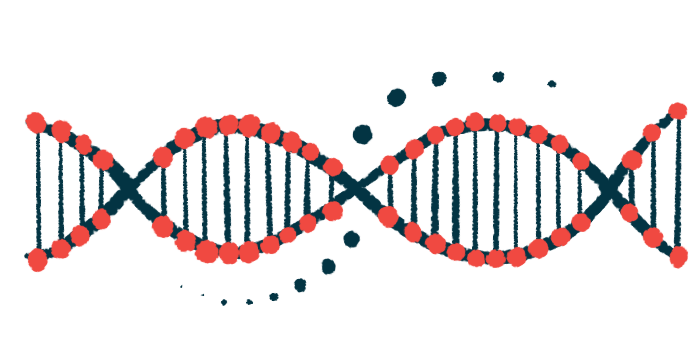Anoikis, form of natural cell death, may help in diagnosing CTEPH
Activity levels of 2 genes tied to process differ with disease, may be biomarkers

Anoikis, a form of programmed cell death, is involved in the development of chronic thromboembolic pulmonary hypertension (CTEPH), according to a genetic analysis study.
Researchers identified two anoikis-related genes associated with CTEPH — PLAUR and HMOX1 — which may serve as diagnostic biomarkers or as treatment targets.
Data also suggest that stannsoporfin, a drug that inhibits the protein encoded by HMOX1, may offer a way of treating CTEPH patients, the scientists, all in China, reported.
The study, “Identification of Anoikis-related potential biomarkers and therapeutic drugs in chronic thromboembolic pulmonary hypertension via bioinformatics analysis and in vitro experiment,” was published in Nature Scientific Reports.
Activity levels of 2 genes higher in blood of people with CTEPH
In CTEPH, a rare form of pulmonary hypertension, blood clots block the blood vessels that pass through the lungs, increasing blood pressure. This causes various symptoms, including shortness of breath, light-headedness, fainting, chest discomfort, and, in more severe cases, right heart failure.
Early symptoms of CTEPH usually are not obvious, making a prompt diagnosis challenging. In part, this failing also is due to the lack of disease-specific biomarkers helping to predict CTEPH severity and a person’s clinical outcomes. A need exists for genetic biomarkers that could shed light on the disease’s underlying biology and detect therapeutic targets, the researchers wrote.
Anoikis is a specialized form of programmed cell death, or apoptosis, a biological process that eliminates abnormal or unwanted cells. This form is triggered by the detachment of cells from the extracellular matrix, a three-dimensional network of molecules and proteins that provides structural support to cells.
However, “the precise involvement of anoikis in the progression of CTEPH remains poorly understood,” wrote the researchers, who conducted a gene expression (activity) analysis of data from the Gene Expression Omnibus database to identify genes expressed differently between CTEPH patients and people without this disease, serving as controls.
The analysis identified 676 differently expressed genes, or those with higher or lower activity in patients than controls. Of these, 32 were associated with anoikis, mostly related to regulating the apoptotic process. Still, an enrichment in many immune-related genes also was noted.
Researchers then used machine learning, a type of artificial intelligence that uses algorithms to learn from data and identify patterns, to narrow the number of these genes down to five. Using a second dataset as a validation step, two matching genes, PLAUR and HMOX1, stood out.
“This suggests that PLAUR and HMOX1 may be the most important diagnostic markers,” the researchers wrote.
In line with these findings, a blood sample analysis found significantly higher expression of both the PLAUR and HMOX1 genes in CTEPH patients than in controls.
Proteins encoded by these genes were also significantly higher in patients. PLAUR encodes the urokinase receptor, a protein tethered to the cell membrane. HMOX1 encodes heme oxygenase 1, an enzyme that breaks down heme, a molecule that enables red blood cells to transport oxygen.
Levels of two types of immune cells seen as possibly affected by disease
Given that immune-related genes were previously identified, further analysis suggested that two immune cell types, mast cells and neutrophils, played a role in CTEPH development. Consistently, elevated PLAUR expression significantly correlated with low levels of activated mast cells, while elevated HMOX1 significantly correlated with high neutrophil levels.
Lastly, the researchers searched for drugs that modulate the proteins encoded by PLAUR and HMOX1. Stannsoporfin, which inhibits heme oxygenase 1, was identified, suggesting it may have a therapeutic effect on CTEPH.
“The study demonstrates for the first time that Anoikis may be involved in the [development] of CTEPH,” the researchers concluded. “HMOX1 and PLAUR are two powerful and promising diagnostic biomarkers for CTEPH-related Anoikis,” they added.








